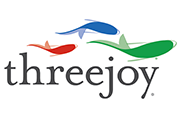There are many things to like about Marilee Adams book Change Your Questions, Change Your Life (here). Written as a business parable, this book explores the role of asking questions and curiosity in effectiveness at work and in life. Routinely in my coaching and training practice, I use many of her particular questions as well as her idea of Q-storming (brainstorming with questions) to help clients become more creative and less stuck.
One of the most useful distinctions in the book is the distinction Adams makes between judging and learning. Oftentimes, someone behaves in a manner we are unaccustomed to or tells us something unfamiliar, and we immediately judge it, oftentimes as something bad. This is entirely natural, as human beings we are “living-breathing assessment machines,” and the making of assessments and judgments is part of our evolutionary apparatus that once protected us from harm on the savanna.
Of course, what is good for survival in a hostile and dangerous environment may not be as appropriate in modern civilization, and nowadays we find ourselves in a stream of unconscious judgment during much of our waking hours, a stream of judgment that is misaligned with the relative peace and tranquility of our everyday lives, a stream of judgement that serves us poorly, especially when we need to be innovative, creative, or collaborative.
Adams suggests that being in judgment this way prevents us from learning very much. By rejecting something as bad, we don’t reflect on it sufficiently long to learn whatever lessons might be embedded in the thing that we are judging. This is such an important lesson she depicts it graphically in the choice map shown below. When we judge, our judgment locks us into a particular point of view leading to the judger pit, a self-induced morass from which reflection and learning are nearlyimpossible. When we switch from the judger path to the learner path (through the asking of “switching questions”) our ability to be curious and reflect and learn returns.

A useful exercise is to self-observe your own thoughts and feelings during the course of 2-3 days, and notice what portion of the time you are in judgment of what is happening or being said (or not). Are you in judgment, 10% 50%, 90%, or exactly what percentage of the day? In the exercise, you should simply be aware or notice your degree of judgmentalism, but try to not judge yourself (about the degree of judgment) regardless of the outcome. Awareness is the first step to change, and once we are aware, we can do something different, but especially in this exercise, moving to harsh critical self-judgment misses the opportunity to learn from the observation.
What we do with the results of self-observation is up to us, but a good follow-on question is this. In what ways does the degree of judgment observed serve me and what ways does it not? Knowing the percentage of time you are in judger versus learner and then reflecting on whether that serves the life you want to live is a good starting point for effective personal growth and change.


